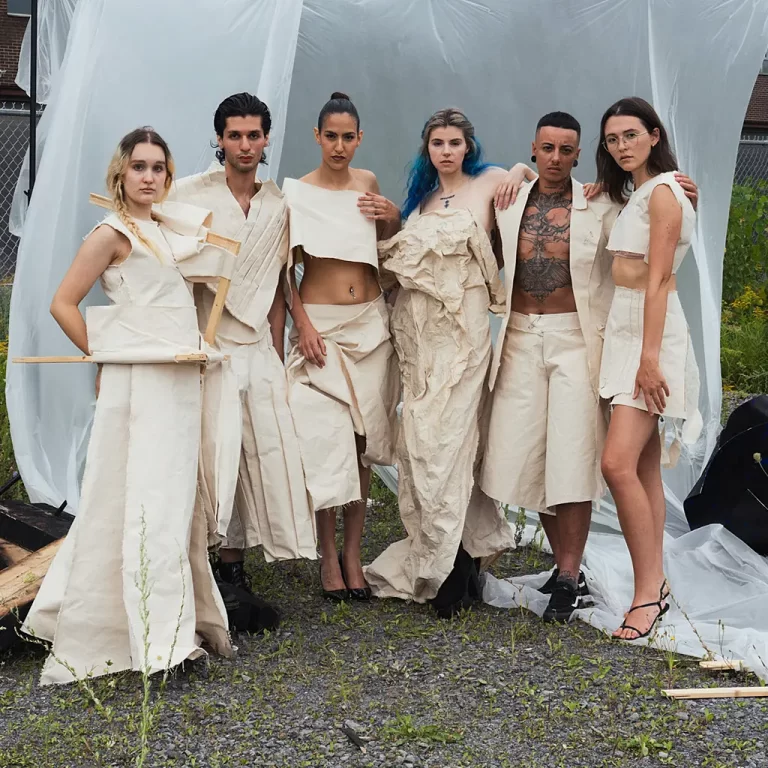It’s a singular time for fashion. Iconic retailers in the U.S. Neiman Marcus, J. Crew, and JC Penney file for bankruptcy protection. In Canada, it’s household names like Aldo, Reitmans and Löle who are facing similar woes. Overall, not good news for consumers to whom these brands cater to and who have a craving for their fast fashion fixes on a regular basis.
According to business observers, this is only the beginning of the crisis that the coronavirus has unleashed on the fashion world.
Parallel to this, the influencer model has gone bust. Seemingly overnight, those pastel Instagram posts showcasing golden bangles worn by the dozens adorning sleek, toned arms, logo-laden handbags casually tossed on the warm, glistening Ibiza sand, collectible sneakers paired with premium frayed denim jeans, and rainbow-coloured diamond stackable bands surely feel anachronistic. Out of line and egotistically driven when we’re supposed to be #allinthistogether.
As we slide towards more than uncertain times, what will happen to the fragile middle class that still likes to indulge in hot fashion finds? Will it be cheaply made, with more disposable items than ever, or a robust return to quality over quantity?

Bubbles of Creativity
“In Canada, there are many bubbles of creativity, many types of lifestyles,” says Hans Koechling, Fashion Show Producer, Artistic Director and Image Creator of The Image Is…, a Montreal-based company producing high-profile virtual fashion events. “Right now, it’s all about wellness and comfort. Things that make you feel good. Think about clothing to accessorize your life and to wear around the house.”
We all know the idea of comfort resonates differently for many of us. For some, the new work from home uniform has been the cozy tie-dyed sweatsuit in midnight blue, or unicorn rose—think of it as the classic new outfit for your #roséallday virtual cocktail party. Oh yes, millennial pink is still a big thing!
Stretchy but super fashion jeans are also the choice for many. And even more appealing if they’re locally produced like Yoga Jeans, made in Quebec and “designed to move with you throughout the day while holding their form and making you look and feel your best.”
The athleisure combo of leggings and yoga wear? “Of course, it still has enduring power,” points out Hans Koechling. “I really believe the look of fitness will continue to be an important one, moving forward, since not everyone will feel safe going back to the gym and some will continue to work out at home.”

The Cycle Is Broken
In the last six months, since the global Covid-19 pandemic was confirmed by the WHO on March 11, 2020, the fashion world has been shell-shocked to its very core.
From the beginning of the 2000s, much of the big-brand fashion model has relied on a very complex supply chain system in which a garment’s production is distributed across various geographic locations. The system is robust, providing international trade operates smoothly, quickly, and there is a steady demand on the part of consumers constantly looking for newness and novelty at an affordable price.
That $29 embroidered T-shirt you bought at Joe Fresh along with tonight’s take-out dinner might be designed in Toronto, while the fabric is sourced in Morocco, embroidered in China, and the final product is shipped to Vancouver, from where it’s distributed across Canada. When borders closed down because of Covid, everything stopped abruptly. Including the livelihood of millions of clothing workers from the poorer nations in the world (many of them in Southeast Asia, where there are hundreds of garment factories manufacturing fast fashion) already living in precarious situations and subjected to the whims of the fashion world.
Lavish fabrics for the couture cognoscenti are also suffering the same plight.
Mongolia supplies around 40% of the world’s softest, most luxurious cashmere fibre, but the country’s herders and middlemen depend on Chinese buyers who purchase more than 80% of their wool for processing into yarn. That’s how those cool camo sweaters and comfy scarves we love so much are made. The price of raw cashmere wool has tumbled to barely a third of what it was in 2019, which means the supply will dwindle because it’s not profitable enough—at the moment—to continue herding cashmere goats.

What the Future of Fashion Might Look Like
Now that the behemoths of retail are looking to close a significant amount of their physical stores—Swedish brand H&M is slated to shut down 26% of its worldwide locations, and Zara 20%—what options will middle-class consumers be left with, when wanting a shimmering mermaid dress for less than $100?
The flagship stores will remain, but the number of these stores in a specific area will be fewer, Hans believes.
On the designer side, “we might start seeing creators showing [collections on the runway] really late, much closer to the actual season they’re working on. But the collections will definitely be smaller, with only certain key items being produced.”
Consumer’s appetite for fashion pieces will most certainly decrease because of a substantial reduction in disposable income brought on by the Covid-19 crisis. Added to that, the entertainment aspect of shopping in stores will have sharply decreased because of social distancing and new hygiene protocols. Where is the fun in shopping for a new piece of clothing, supposed to make you feel cool and good about yourself, when you have to ask the salesperson dressed in a quasi hazmat suit the thing you can’t even model for yourself (or Insta!) in a dressing room?
Maintaining physical stores will become increasingly problematic for retailers. Which is the reason more and more fashion brands are now offering ‘online exclusive’ items only. A good way to ensure your client base remains interested in your brand and committed to returning (often!) to your ecommerce website. And we’re not even mentioning all the digital marketing strategies that can easily be deployed via newsletters, blogs and special insider, VIP discounts.
Is it time to retreat to sure-fire, classical items that are offer good quality, great fit, at a premium price? Maybe the future of fashion lies in the utilitarian, the basic. But we still need the fantasy…





